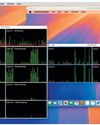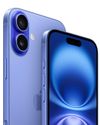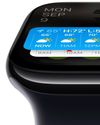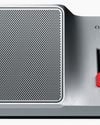
When you think about, it is quite amazing how quickly smart speakers have become so completely normalised. Speech recognition has been around in some limited form since the 1960s when IBM built the Shoebox, capable of recognising a then-astonishing 16 words and numbers. In the mid-1990s, Dragon Dictate introduced reasonable (though sometimes comically imprecise) speech recognition on the desktop as long as you were willing to invest around twice the price of a computer to pick up V1 of its software. You could argue that it was Apple that brought voice tech to the masses with Siri, though Siri actually started development in 1993; Siri Inc was snaffled up by the Cupertino giant in 2010, and hit the iPhone in 2011.
But to look at any company other than Amazon as the cause of the spectacular growth of smart speakers would be to look in completely the wrong direction. Alexa, first introduced with the Amazon Echo exclusively for Amazon Prime members in 2014, beat Microsoft’s Cortana to the market and came two years before the Google Assistant. That first Echo caught a huge amount of press and public attention: here was something brand new in the tech field. A self-contained AI brain, squashed into a speaker that wasn’t too shabby at pushing out a tune. Amazon expanded its capabilities with Alexa Skills, it released a friendly API with terms of use acceptable enough that all and sundry began build compatible smart devices. It made the voice assistant a thing.
Flat-bottomed spheres
この記事は MacFormat UK の December 2020 版に掲載されています。
7 日間の Magzter GOLD 無料トライアルを開始して、何千もの厳選されたプレミアム ストーリー、9,000 以上の雑誌や新聞にアクセスしてください。
すでに購読者です ? サインイン
この記事は MacFormat UK の December 2020 版に掲載されています。
7 日間の Magzter GOLD 無料トライアルを開始して、何千もの厳選されたプレミアム ストーリー、9,000 以上の雑誌や新聞にアクセスしてください。
すでに購読者です? サインイン

Mac hardware
We help to solve your hardware hassles, from interrupted upgrades to running diagnostics

Give your iPhone a whole new look in iOS 18
Make your iPhone uniquely you

iPhone 16
Apple Intelligence-ready smartphone for the rest of us

Apple Watch Series 10
10th anniversary Watch is now slimmer with an even bigger display

AirPods 4
Apple's most affordable AirPods remain a brilliant buy

We. HEAR Pro
Room-filling sound from this stylish wireless speaker

HiDock H1
An impressive 11-port AI audio dock for conferencers

Adobe Premiere Elements 2025
Create eye-catching videos for sharing on social media

Photoshop 2024
Your imagination is the limit with this AI-powered pixel creator

Wispr Flow
Bring the power of AI dictation to DMs, documents and Discord chats